Overview
The first commercial radio broadcast announced the results of the 1920 Presidential election and aired on November 2, 1920 from Pittsburgh, PA. At the time of the broadcast 8ZZ was the station’s call sign, KDKA served as an alternate call sign for the station. KDKA was the first commercially licensed radio station. It aired from Westinghouse Electric and Manufacturing Company, a private company that developed radio technology.
When the United States entered WWI the government entered a contract with the Westinghouse Electric and Manufacturing Company. The government sought improvement in radio technology for wartime purposes. At this time the government instructed civilian radio stations to pause. Westinghouse Electric and Manufacturing became the only company given permission to develop and operate radio stations during the war as per their government contract.
War-time experiments conducted by Westinghouse radio technicians revolved around vacuum tubes that allowed audio communication. John Ambrose Fleming originally invented vacuum tubes in 1904 as an alternative to spark gap transmitters. Those were only capable of communicating morse code, which was limiting to general audiences. Once Fleming conceived vacuum tubes capable of audio transmission, morse code fell out of common use.
Origins of the Broadcast
The origins of the first commercial radio broadcast can be traced to the home garage of Frank Conrad. He was the leading engineer at Westinghouse Electric and Manufacturing Company. Prior to WWI he experimented with radio through station 8KX in his garage. When the government paused civilian radio stations, 8KX was among them. When the pause was lifted after the conclusion of WWI Conrad improved 8KX with the knowledge he gained from the wartime developments and operations at Westinghouse. On October 17, 1919 Conrad began broadcasting entertaining material from his 8KX garage station. He became widely renowned by radio enthusiasts of the area for this station; it was unconnected to his work for Westinghouse Electric and Manufacturing Company.
Less than a year later in September 1920, Conrad’s personal experiments collided with his work for Westinghouse. On September 23, 1920 an ad placed in The Pittsburgh Press by a local department store announced “at home” radio receivers were available for purchase at ten dollars. On September 29, 1920, a notice published by The Pittsburgh Press informed readers of an “air concert” picked up by the radio receivers sold earlier that week. The concert of note was one of Conrad’s broadcasted from 8KX.
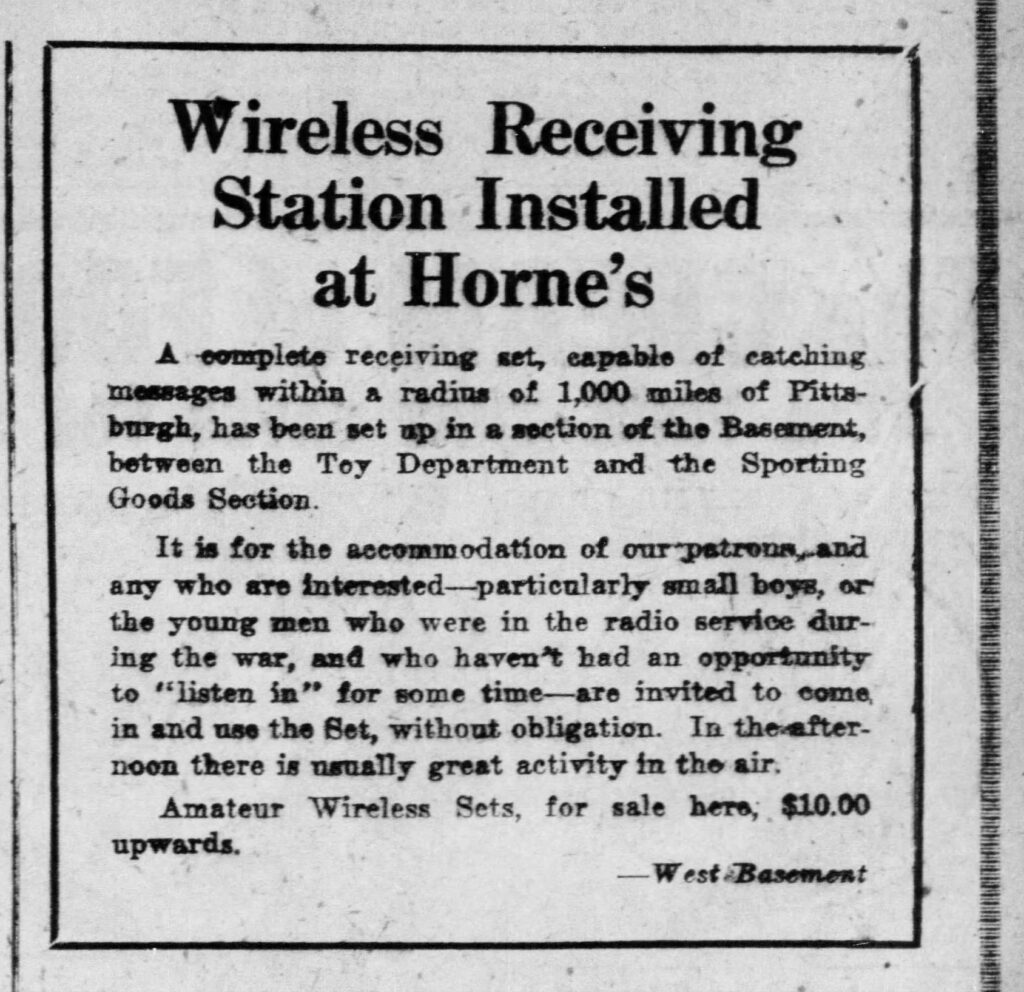
The Pittsburgh Press, Pittsburgh, PA. September 23, 1920 – Newspapers.com
When Westinghouse’s contract with the government was nullified at the conclusion of WWI other companies and their radio stations, such as main competitor Radio Corp. of America formed by General Electric Company of Schenectady, New York, regained permission to resume operations. Westinghouse desired to establish the company as the main provider of radio communications nationally and internationally. Vice President Harry P. Davis saw an opportunity for company growth through the success of Conrad’s 8KX. Davis proposed that Westinghouse attach “at home” radio receivers to their products. He facilitated the development of regular radio programs out of Westinghouse as incentive for customers to purchase the receivers. Davis held a meeting with the “radio cabinet” of Westinghouse after he launched this project. At this meeting Davis requested an operating radio station by November for the purpose of broadcasting the election results to the public.
KDKA
Westinghouse radio station, KDKA, was originally conceived in an effort to avoid business expenses through private radiotelegraph connections between different sister facilities of the East Pittsburgh location, Springfield, Massachusetts, Newark, New Jersey, and Cleveland, Ohio. Post Harry Davis’s request for a functioning station, a Limited Commercial Station license was issued to Westinghouse Electric and Manufacturing Company on October 27, 1920. The serial number for the license was #174 and the identifying letters assigned were KDKA, thus the station was established.
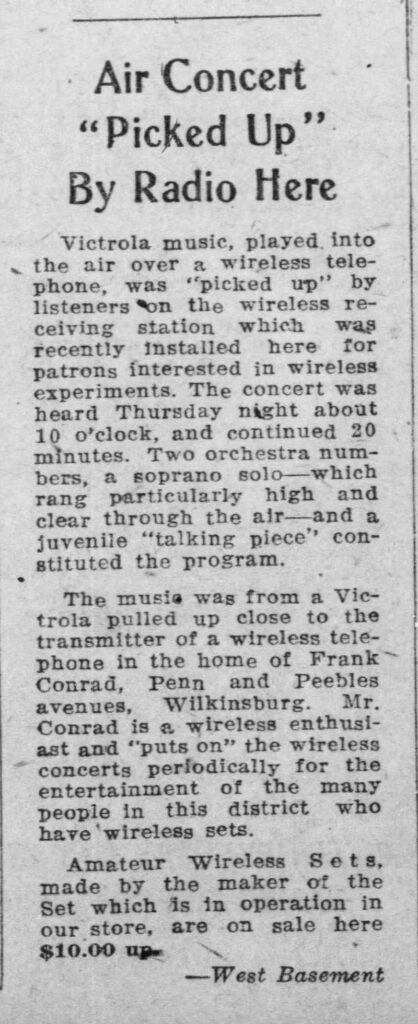
The Pittsburgh Press, Pittsburgh, PA. September 29, 1920 – Newspapers.com
This uncommon call sign emerged from unique circumstances. Starting in 1912, standard procedure was that stations east of Mississippi river received call signs that began with “W”. Westinghouse’s station license was awarded during a period of time where call signs from the “K” block, formerly assigned to ship stations, were redistributed to land stations. When standard procedure resumed, the licensing agency permitted KDKA to keep the call sign it was originally designated. Prior to the first commercial broadcast of the 1920 Presidential election, the station was given temporary authorization for operation as 8ZZ.
The Broadcast
Preparation for the election broadcast began with construction of an antenna and shack-like structure on the roof of Westinghouse’s East Pittsburgh facility. The antenna was made up of six wires ninety feet long and placed twenty feet apart. This structure was two hundred and ten feet off the ground. Frank Conrad and Donald G. Little constructed a one hundred watt vacuum-tube transmitter in addition to the massive antenna structure.
Conrad planned to broadcast the election results from his own station 8KX with the American Radio Relay League. The league was a non profit organization made up of amateur radio enthusiasts. Westinghouse required Conrad’s efforts for a successful operation, and his original plan became the back-up. Thus on the day of the broadcast, November 2, 1920, Conrad stationed himself at his home garage with 8KX on standby in case transmitters failed at Westinghouse. The transmitters held up and the broadcast was successful, no alternative station necessary. The voice of Leo Rosenberg from Westinghouse’s publicity department was heard by all with “at home” radio receivers.
Radius of November 2, 1920 Broadcast
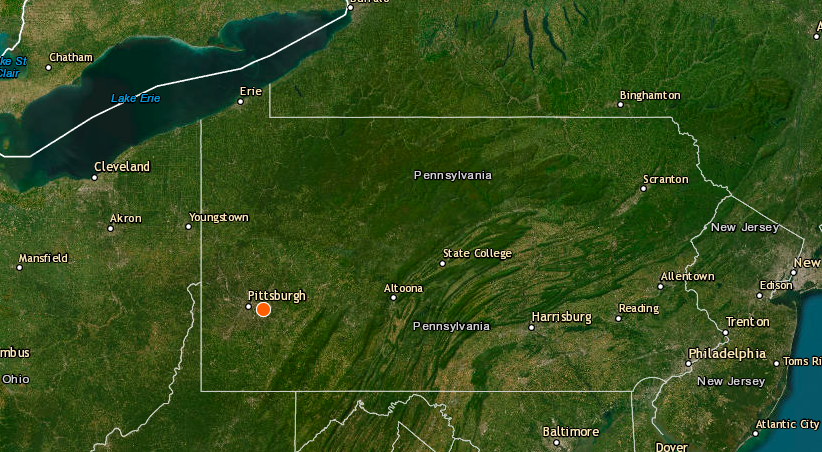
Significance
KDKA remains on the air to this day.
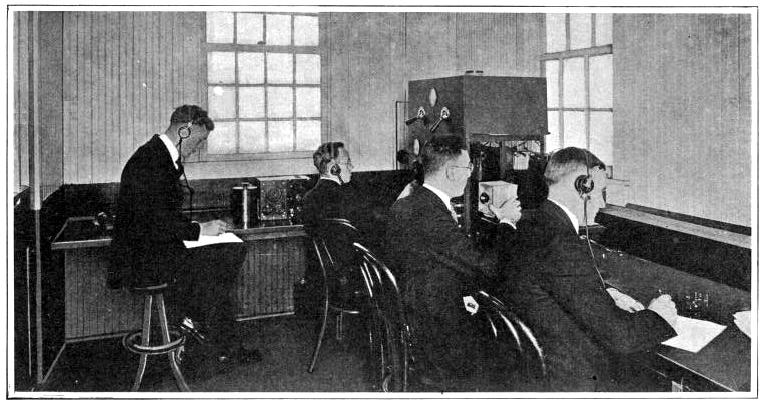
Public Domain, found on Wikipedia.com
The successful broadcast of the election results made it so other events could air on the radio. On August 5, 1921 a baseball game aired on the radio for the first time. On October 8, 1921 the radio broadcasted a football game for the first time. After some time on May 4, 1925 President Coolidge’s inauguration aired to the public. Later that year on November 28, 1925 Barn Dance in Nashville, Tennessee aired. This radio broadcast evolved into “Grand Ole Opry,” the longest running radio broadcast in US history. That is just within five years of the initial broadcast. Communication and connection marginally improved on a global scale as a result of this breakthrough in radio technology.
Popular “Pop” culture as we know it today originated in the 1920s because of the way radio allowed people to connect. Someone in California could experience Boston Red Soxs baseball games without leaving their home. Jazz enthusiasts in New York could experience country music from Nashville and vice versa. People connected through shared opinions and experiences brought to them by radio, thus fan-bases were born. A new type of relationship forged between civilians and public figures. One could argue influencers of today have radio to thank for their ability to connect with their audiences.
The Public gained a new source of entertainment, but also a new source of information in general. Information spread across the country, and across the world in a way it previously could not. The list of all events radio informed the public post-conception is endless. Families gathering around their radios turned into families gathering around their televisions. Now, radios are installed in cars and available on smartphones. Many aspects of life enjoyed today find their origins in the first commercial radio broadcast on November 2, 1920.
KDKA remains on the air to this day. It can be listened to on stations 100.1 FM and 1020 AM.
Bibliography
“Amateur Radio Stations: 8KX Pittsburgh”, QST Magazine, September 1920, pages 32-34.
Bucher, E. E., General J. G. Harbord, David Sarnoff, Dr. F. B. Jewett, E. P. Edwards, Judge Stephen B. Davis, H. P. Davis, et al. The Radio Industry: The Story of Its Development. Chicago, Illinois: A.W. Shaw Company, 1928.
“File : KDKA – First Licence – October 27, 1920.Pdf – Wikimedia.” Accessed May 3, 2023. https://commons.wikimedia.org/wiki/File:KDKA_-_first_licence_-_October_27,_1920.pdf.
“History of Commercial Radio.” Federal Communications Commission. Accessed May 3, 2023. https://www.fcc.gov/media/radio/history-of-commercial-radio#:~:text=November%202%2C%201920,2%2C%201920.
O’Neal, James E. “Constructing the First ‘Real’ Radio Station.” Radio World, October 8, 2020. https://www.radioworld.com/columns-and-views/roots-of-radio/constructing-the-first-real-radio-station.
“Video: Celebrating 100 Years of KDKA Radio.” audacy.com, November 2, 2020. https://www.audacy.com/kdkaradio/news/local/video-celebrating-100-years-of-kdka-radio.
Urban, C. E., “The Radio Amateur”, Pittsburgh Gazette Times, September 26, 1920, Fifth section, page 10. Urban, C.E., “Wireless Telephone Here”, Pittsburgh Gazette Times, October 26, 1919, Sixth section, page 13.
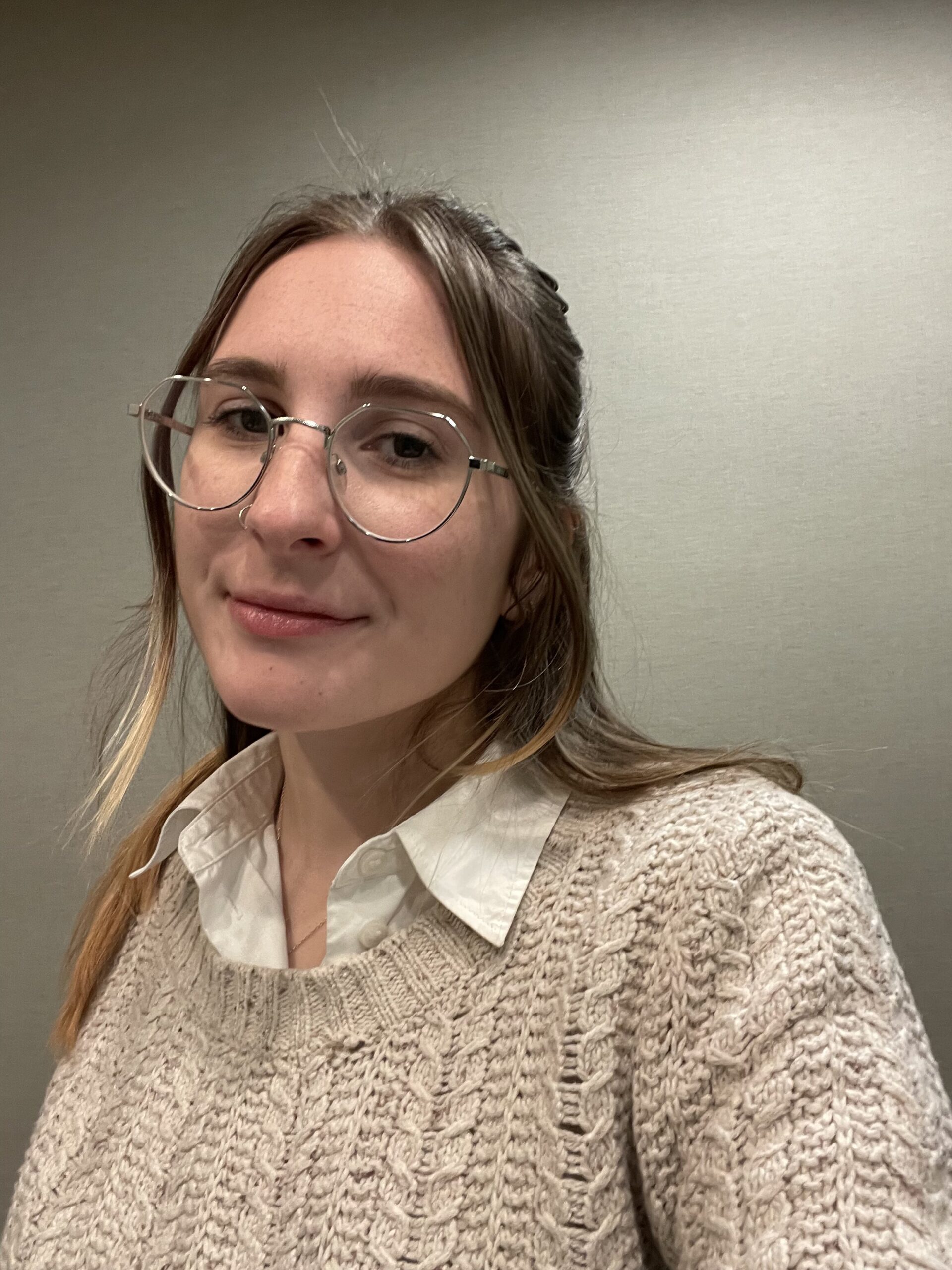
Michelle Steidle is a History Major at Ramapo College, graduating with the Class of 2023. She enjoys historical research, long walks on the beach, and a good joke.

